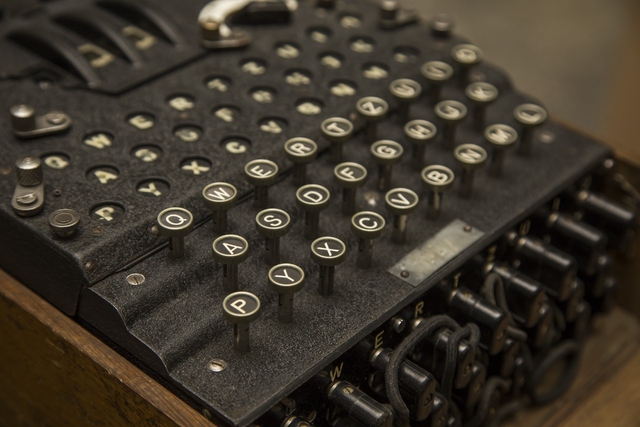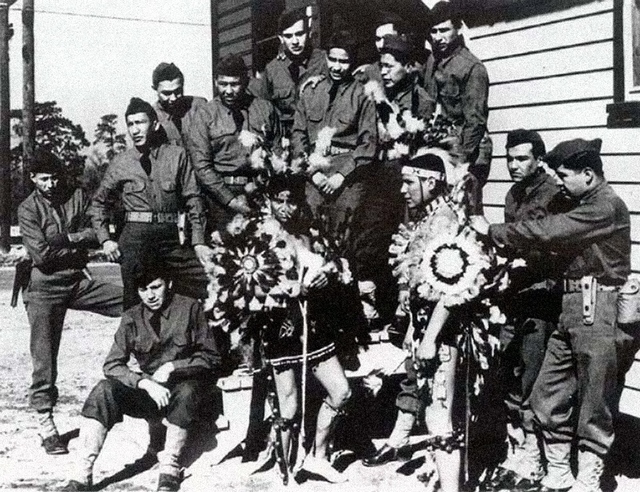
1 year(s) ago
A negative form19 A professor was lecturing his class one day. He wanted to focus on negation one __________ time. MUCH20 “The ____________ example is English”, he said, “In English a double negative forms a positive. In some languages, though, such as Russian, a double negative is still a negative. ONE21 However, there ____________ a language wherein a double positive can form a negative. ”A loud voice from the back piped up, ‘Yeah, right. ‘ NOT BEA boot on the wrong foot22 Willy asked his teacher to help him get his shoes on at the end of a busy day. After quite a struggle, Tessa finally got them on. “They’re on the wrong ____________, Miss,” mumbled Willy. Staying calm she swapped them over for him. FOOT23 “They’re not my shoes, Miss,” Willy murmurs again. Tessa ____________ hard to keep her cool and asked Willy why he hadn’t told her before. FIGHT24 She then kneeled down again and helped him pull the shoes off. “These aren’t my shoes, they’re my brother’s and Mum told ______________ not to tell anyone. ” I25 Tessa helped him back into his shoes, got him into his coat, wrapped his scarf round his neck. When he ____________, she asked, “Where are your gloves, Willy?” “Oh, Miss, I always put them in my shoes ” DRESS26 The first form of cryptography was actually the simple writing of a message. Do you know why? Because most people were ____________ to read or write. ABLE27 In fact, the very word cryptography comes from the Greek words ‘kryptos’, which mean ‘hidden’, and ‘graphein’, which means ‘writing’. Cryptography, by its very nature, implies secrecy and ____________. DIRECTNESS28 Early cryptography included transforming messages into unreadable figures to protect the content of a message while it was carried from one ____________ to another. ADDRESS29 Nowadays, cryptography has evolved ____________ and today it includes such things as digital signatures, authentification of a sender or receiver and many more. GREAT30 People wanted to conceal messages since they moved out of caves and started living in groups. The earliest forms of cryptography were found in the cradle of ____________, Egypt, Greece and Rome. CIVILIZE31 The Greeks, for example, wrapped a tape around a stick, and then wrote the message on the wound tape. Unwinding the tape made the writing ____________. The receiver of the message had a stick of the same diameter and used it to decipher the message. MEANING
ответы: 1
Зарегистрируйтесь, чтобы добавить ответ
Ответ:
19. More
20. First
21. Is
22. Feet
23. Fought
24. Me
25. Was dressed
26. Not able/unable
27. Directness
28. Addressee/receiver
29. Greatly/a lot
30. Civilisation
31. Meaningful

Oct 31, 2021
Чтобы ответить необходимо зарегистрироваться.
The earliest form of cryptography was the simple writing of a message, as most people could not read (New World, 2007). In fact, the very word cryptography comes from the Greek words kryptos and graphein, which mean hidden and writing, respectively (Pawlan, 1998).
Above: The Enigma Machine, the German cipher machine utilzed during WWII.
Below: Comanche code-talkers used words from their Native American language to help send secret messages for U.S. forces in the European theatre during WWII.
Early cryptography was solely concerned with converting messages into unreadable groups of figures to protect the message’s content during the time the message was being carried from one place to another. In the modern era, cryptography has grown from basic message confidentiality to include some phases of message integrity checking, sender/receiver identity authentication, and digital signatures, among other things (New World, 2007).
The need to conceal messages has been with us since we moved out of caves, started living in groups and decided to take this civilization idea seriously. As soon as there were different groups or tribes, the idea that we had to work against each other surfaced and was proliferated, along with rank violence, secrecy, and crowd manipulation. The earliest forms of cryptography were found in the cradle of civilization, which comes as no surprise, including the regions currently encompassed by Egypt, Greece and Rome.
As early as 1900 B.C., Egyptian scribes used hieroglyphs in a non-standard fashion, presumably to hide the meaning from those who did not know the meaning (Whitman, 2005). The Greek’s idea was to wrap a tape around a stick, and then write the message on the wound tape. When the tape was unwound, the writing would be meaningless. The receiver of the message would of course have a stick of the same diameter and use it to decipher the message. The Roman method of cryptography was known as the Caesar Shift Cipher. It utilized the idea of shifting letters by an agreed upon number (three was a common historical choice), and thus writing the message using the letter-shift. The receiving group would then shift the letters back by the same number and decipher the message (Taylor, 2002).
The Caesar Shift Cipher is an example of a Monoalphabetic Cipher. It is easy to see why this method of encryption is simple to break. All a person has to do is to go down the alphabet, juxtapositioning the start of the alphabet to each succeeding letter. At each iteration, the message is decrypted to see if it makes sense. When it does appear as a readable message, the code has been broken. Another way to break Monoalphabetic ciphers is by the use of what is known as frequency analysis, attributed to the Arabs circa 1000 C.E. (New World, 2007). This method utilizes the idea that certain letters, in English the letter «e,» for instance, are repeated more often than others. Armed with this knowledge, a person could go over a message and look for the repeated use, or frequency of use, of a particular letter and try to substitute known frequently used letters (Taylor, 2002).
As for the Greek method of using a stick, once the method was known, it was a simple matter of trying out sticks of different diameters until the message became readable.
The art and science of cryptography showed no major changes or advancements until the Middle Ages. By that time, all of the western European governments were utilizing cryptography in one form or another. Keeping in touch with ambassadors was the major use of cryptography. One Leon Battista Alberti was known as “The Father of Western Cryptology,” most notably due to his development of polyalphabetic substitution. His method was to use two copper disks that fit together. Each one of them had the alphabet inscribed on it. After every few words, the disks were rotated to change the encryption logic, thereby limiting the use of frequency analysis to crack the cipher (Cohen, 1990). Polyalphabetic substitution went through a variety of changes and is most notably attributed to Vigenere, although Rubin claims that he in fact had nothing to do with its creation. Rubin further points out that the use of the cipher disks continued in the Civil War, with the South using brass cipher disks, although the North regularly cracked the messages (2008).
Gilbert Vernam worked to improve the broken cipher, creating the Vernam-Vigenere cipher in 1918, but was unable to create one of significantly greater strength. His work did lead to the one time pad, which uses a key word only once, and it proved to be near unbreakable (Rubin, 2008). Whitman reports that criminals used cryptography during prohibition to communicate with each other.
Additionally, it is important to mention the recently popularized «windtalkers.» The Navajo’s used their own language as a basis for cryptography (2005). The code was never broken and was instrumental in the victory in the Pacific Theatre during WWII. An argument could be made that the spoken language was not technically cryptography, but it should be noted that at every communication, the message was written down as a matter of procedure.
In modern times, the public key method of cryptography has seen wide adoption. The use of a common public key and a private key held only by the sender is in use today as a form of asymmetric encryption; one of the uses of this method is for the sender to use the private key to encrypt the message and then anyone who receives the message uses the public key to decipher it. In this way, the receiver knows who the message had to come from.
This method makes up the backbone of the Digital Signature. Problems arise when communications between multiple organizations require the use of many public keys and knowing when to use which one. No matter which method is used, a combination of methods applied one after the other will give the best result (Whitman, 2005).
In conclusion, it is somewhat surprising how limited the history of this very important topic is. No doubt cryptography and in a greater sense, cryptology, has played an enormous role in the shaping and development of many societies and cultures. While history may paint a different picture, the fact that the winners often write history is worth noting. If an army has a strong weapon that was instrumental in providing information that led to success, how apt are they to reveal it in the records of the wars? Instead, it may seem better to have idolized heroes than to reveal the cloak and dagger methods that actually led to success. Crpytography, by its very nature, suggests secrecy and misdirection; therefore, the fact that the history of this topic is short and somewhat inaccessible is of no great surprise. Perhaps it is itself coded in what is has already been written.
Cohen, F (1990). A short history of cryptography. Retrieved May 4, 2009, from http://www.all.net/books/ip/Chap2-1.html New World Encyclopedia (2007).
Cryptography. Retrieved May 4, 2009, from http://www.newworldencyclopedia.org/entry/Cryptography
Pawlan, M. (1998, February). Cryptography: the ancient art of secret messages. Retrieved May 4, 2009, from http://www.pawlan.com/Monica/crypto/
Rubin, J. (2008). Vigenere Cipher. Retrieved May 4, 2009, from http://www.juliantrubin.com/encyclopedia/mathematics/vigenere_cipher.html
Taylor, K. (2002, July 31). Number theory 1. Retrieved May 4, 2009, from http://math.usask.ca/encryption/lessons/lesson00/page1.html
Whitman, M. & Mattord, H. (2005). Principles of information security. [University of Phoenix Custom Edition e-text]. Canada, Thomson Learning, Inc. Retrieved May 4, 2009, from University of Phoenix, rEsource, CMGT/432
Английский язык
Задача по теме: «Грамматика и Лексика. Задание № 26»
Задание 26
Грамматика и Лексика. Задание № 26
Вербицкая М.В. Английский язык единый государственный экзамен. — Москва: Издательство «Национальное образование», 2023. — 368 с. Материалы публикуются в учебных целях
Cryptography
- The first form of cryptography was actually the simple writing of a message. Do you know why? Because most people were unable to read or write. In fact, the very word cryptography comes from the Greek words ’kryptos’, which mean ’hidden’, and ’graphein’, which means ’writing’. Cryptography, by its very nature, implies secrecy and _____________ (DIRECTNESS).
- Early cryptography included transforming messages into _____________ (READABLE) figures to protect the content of a message while it was carried from one correspondent to another.
- Nowadays, cryptography has evolved ____________ (GREAT) and today it includes such things as digital signatures, authentification of a sender or receiver and many more.
- People wanted to conceal messages since they moved out of caves and started living in groups. The earliest forms of cryptography were found in the cradle of ________________ (CIVILIZE), Egypt, Greece and Rome.
- The Greeks, for example, wrapped a tape around a stick, and then wrote the message on the wound tape. Unwinding the tape made the writing ____________ (MEANING). The receiver of the message had a stick of the same diameter and used it to decipher the message.
Образуйте от слова READABLE однокоренное слово так, чтобы оно грамматически и лексически соответствовало содержанию текста.
Early cryptography included transforming messages into _____________ figures to protect the content of a message while it was carried from one correspondent to another.
Решение
Образуйте от слова READABLE однокоренное слово так, чтобы оно грамматически и лексически соответствовало содержанию текста.
Early cryptography included transforming messages into _____________ figures to protect the content of a message while it was carried from one correspondent to another.
Решение:
Правильный ответ – UNREADABLE
По переводу понимаем, что на месте пропуска должно стоять прилагательное: “Ранняя криптография включала преобразование сообщений в нечитаемые цифры для защиты содержимого сообщения при его передаче от одного корреспондента к другому”. Так как нам уже дано прилагательное (читаемый), нам нужно образовать от него тоже прилагательное, но с противоположным значением (нечитаемый) — делаем это с помощью приставки un-
Ответ: UNREADABLE
На экзамене это задание принесло бы тебе 2/2 баллов.
Нужно авторизоваться
Нужно авторизоваться
Введите больше 6 символов
На почту 12345@mail.ru отправлена ссылка для сброса пароля.
Пожалуйста, подтвердите ваш номер телефона
Пополнение
счёта
Курс заблокирован
К сожалению, данный курс заблокирован. Необходимо внести доплату
Вывод
средств
Ваше задание
подтверждено!
успешно
Теперь вы можете приступить
к следующему уроку
курса по математике
Перейти к уроку
Подтверждение
замены
Для смены номера телефона
мы отправили Вам код по СМС,
введите его в поле ниже.
Подтвердить
Ты включаешь автопродление — 25-го числа каждого месяца доступ к купленным курсам будет автоматически продлеваться. Деньги будут списываться с одной из привязанных к учетной записи банковских карт. Управлять автопродлением можно из раздела «Финансы»
Для активации регулярного платежа мы спишем небольшую сумму с карты и сразу её вернем
Вы дествительно хотите отменить автопродление?
Благодарим за покупку!
В ближайшее время курс будет доступен в разделе Моё обучение
Материалы будут доступны за сутки до начала урока
Чат будет доступен после выдачи домашнего задания
Укажите вашу электронную почту
Мы используем cookie. Это позволяет нам анализировать взаимодействие посетителей с сайтом и делать его лучше. Продолжая пользоваться сайтом, вы соглашаетесь с использованием файлов cookie. Для лучшей работоспособности сайта просим вас отключить AdBlock.
OK
For hundreds of years we have been attempting to sneakily pass written information from one to another while protecting this information from being read by anyone else. The history of cryptography started in its most basic form as a set of characters that could be deciphered to create a message. With the onset of the digital age the way cryptography is utilized has undergone a major change. The more we can learn from the past use of cryptography the better we can be prepared for challenges sure to come in the revolution of the digital democracy.

Early cryptography was solely concerned with converting messages into unreadable groups of figures to protect the message’s content during the time the message was being carried from one place to another. In the modern era, cryptography has grown from basic message confidentiality to include some phases of message integrity checking, sender/receiver identity authentication, and digital signatures, among other things (New World, 2007).
The need to conceal messages has been with us since we moved out of caves, started living in groups and decided to take this civilization idea seriously. As soon as there were different groups or tribes, the idea that we had to work against each other surfaced and was proliferated, along with rank violence, secrecy, and crowd manipulation. The earliest forms of cryptography were found in the cradle of civilization, including the regions currently encompassed by Egypt, Greece and Rome.
As early as 1900 B.C., Egyptian scribes used hieroglyphs in a non-standard fashion, presumably to hide the meaning from those who did not know the meaning (Whitman, 2005). The Greek’s idea was to wrap a tape around a stick, and then write the message on the wound tape. When the tape was unwound, the writing would be meaningless. The receiver of the message would of course have a stick of the same diameter and use it to decipher the message. The Roman method of cryptography was known as the Caesar Shift Cipher. It utilized the idea of shifting letters by an agreed upon number (three was a common historical choice), and thus writing the message using the letter-shift. The receiving group would then shift the letters back by the same number and decipher the message (Taylor, 2002).
READ MORE ON CRYPTOGRAPHY HERE
Asked by: Blaise Schulist
Score: 4.4/5
(23 votes)
When was cryptography invented? It probably started in Egypt around 1900 BC, where a scribe used unexpected hieroglyphic characters instead of usual ones.
Who started cryptography?
The first recorded use of cryptography for correspondence was by the Spartans, who as early as 400 bc employed a cipher device called the scytale for secret communication between military commanders.
Where did cryptography originate from?
The first known evidence of cryptography can be traced to the use of ‘hieroglyph’. Some 4000 years ago, the Egyptians used to communicate by messages written in hieroglyph. This code was the secret known only to the scribes who used to transmit messages on behalf of the kings.
How old is the oldest known example of encryption?
The earliest known example of cryptography being used to protect sensitive information occurred around 3,500 years ago when a Mesopotamian scribe employed cryptography to conceal a formula for pottery glaze, which was used on clay tablets.
What was the first form of cryptography?
The earliest form of cryptography was the simple writing of a message, as most people could not read (New World, 2007). In fact, the very word cryptography comes from the Greek words kryptos and graphein, which mean hidden and writing, respectively (Pawlan, 1998).
27 related questions found
What are the oldest ciphers?
The «Caesar Box,» or «Caesar Cipher,» is one of the earliest known ciphers. Developed around 100 BC, it was used by Julius Caesar to send secret messages to his generals in the field. In the event that one of his messages got intercepted, his opponent could not read them.
What was the most famous early cryptography called?
Fast forwarding to around 100 BC, Julius Caesar was known to use a form of encryption to convey secret messages to his army generals posted in the war front. This substitution cipher, known as Caesar cipher, is perhaps the most mentioned historic cipher in academic literature.
What is the oldest encryption method?
Scytale was an ancient form of encryption commonly in ancient/classical Greece. It is a form of transposition cipher where letters are re-arranged in the messages prior to being deciphered by the recipient. This method involved the use of a cylinder around which a parchment was wrapped and the message written onto it.
Is Morse code a cryptography?
One of the most famous examples of a cipher in regular use is Morse Code (which is not a code, but rather a cipher). Morse Code has the benefit that it can be transmitted in several ways, such as written, by sound or by light. Each letter is replaced by a series of dots and dashes as given by the key below.
What is cipher type?
Definition: Cipher is an algorithm which is applied to plain text to get ciphertext. It is the unreadable output of an encryption algorithm. … Different types of ciphers exist, some of which are: Substitution Cipher: This offers an alternative to the plaintext. It is also known as Caesar cipher.
How did the Egyptians use cryptography?
The first encrypted messages were developed in ancient Egypt as series of disordered hieroglyphics. This means of encryption was very simple, utilizing a method called simple substitution. The original message, or plaintext, was encoded using a substitution cipher (a cipher is a method of encryption).
What is the difference between cryptography and cryptology?
Cryptology is the study of codes, both creating and solving them. Cryptography is the art of creating codes. Cryptanalysis is the art of surreptitiously revealing the contents of coded messages, breaking codes, that were not intended for you as a recipient.
How does cryptography evolve?
The earliest form of cryptography was a cipher (a cipher is an algorithm used for encryption or decryption). … Ciphers had the problem of being easily broken using the frequency of the letters, and once a generalized way of breaking them was found they became obsolete.
How do you say yes in Morse code?
How to Speak «Yes» and «No» in Morse Code. Morse code consists of three things: dots, dashes, and spaces. Because of this, it is actually effortless to speak. We simply need to replace every dot with the sound «di» and every dash with the sound «dah.»
What cipher uses dots?
Cipher Code #2 – Morse Code
Morse Code was invented by Samuel Morse and Alfred Vail. It uses a series of long and short pulses. A dot equals one short pulse (x) called a dit. The dashes called dahs are equal in length to three dots (3x).
Is cryptography still used today?
Although we use it in modern day computing, cryptography has been around since the early existence of mankind as a means of written secrecy, which only the initiated could understand.
What is a weak SSL cipher?
A weak cipher is defined as an encryption/decryption algorithm that uses a key of insufficient length. Using an insufficient length for a key in an encryption/decryption algorithm opens up the possibility (or probability) that the encryption scheme could be broken (i.e. cracked).
Who uses Caesar cipher?
The Caesar cipher is a classic example of ancient cryptography and is said to have been used by Julius Caesar. The Caesar cipher is based on transposition and involves shifting each letter of the plaintext message by a certain number of letters, historically three, as shown in Figure 5.1.
Who is the most famous cryptologist?
Theoreticians
- Rafail Ostrovsky, US, UCLA.
- Charles Rackoff, co-discoverer of zero-knowledge proofs.
- Oded Regev, inventor of learning with errors.
- Phillip Rogaway, US, UC Davis, co-proposer of the Random oracle model.
- Amit Sahai, US, UCLA.
- Gustavus Simmons, US, Sandia, authentication theory.
- Moti Yung, US, Google.
What is the hardest cipher to crack?
Can you crack history’s toughest ciphers and codes?
- Australia’s Somerton Man. …
- The MIT Cryptographic ‘Time-Lock’ Puzzle — LCS35. …
- Dorabella Cipher. …
- The Voynich Manuscript. …
- The Code Book. …
- Kryptos at the CIA HQ. …
- Zodiac Killer. …
- The Beale Papers. Progress has been made solving Beale’s second cipher.
What is the most difficult type of cipher to crack?
The Running Key cipher is similar to the Vigenere cipher, but the key is usually a long piece of non-repeating text. This makes it harder to break in general than the Vigenere or Autokey ciphers.
What is the most common cipher?
In cryptography, a Caesar cipher, also known as Caesar’s cipher, the shift cipher, Caesar’s code or Caesar shift, is one of the simplest and most widely known encryption techniques.
What is the goal of cryptography?
Cryptography is the science of using mathematics to encrypt and decrypt data. Cryptography enables you to store sensitive information or transmit it across insecure networks (like the Internet) so that it cannot be read by anyone except the intended recipient.
What are the three basic operations in cryptography?
Encrypting, decrypting, and hashing are the three basic operations in cryptography.
Which block is cipher?
A block cipher is an encryption method that applies a deterministic algorithm along with a symmetric key to encrypt a block of text, rather than encrypting one bit at a time as in stream ciphers. For example, a common block cipher, AES, encrypts 128 bit blocks with a key of predetermined length: 128, 192, or 256 bits.



